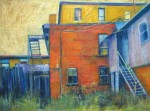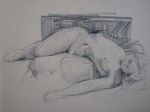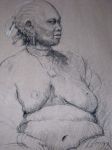#Hamilton2Views a two-person show with Barry Coombs, continues until November 14, at Earls Court Gallery, 215 Ottawa Street North, Hamilton. The gallery is open Tuesday to Saturday.
After focusing mostly on rural and maritime landscape for more than a decade, the shapes and colours of Hamilton’s cityscape are a change of direction for me.
These paintings are all Oil Pastels on panel. My approach is similar to drawing, using every imaginable mark-making technique, from layering and cross hatching, to blending and scratching with tools, my fingers and paint mediums.
-

-
Ray and Peter 36″ x 48″
-

-
Industrial Blue, Red Door 18″ x 24″ SOLD
-

-
Overpass 18″ x 24″ SOLD
-

-
Vienna Tavern 24″ x 36″ SOLD
-

-
Mulberry Red 18″ x 24″ SOLD
-

-
Ice House 36″ x 48″ SOLD
-

-
STELCO
Blue 18 x 24
-

-
Affinity 11″ x 14″ SOLD
-

-
Back Steps 36″ x 48″SOLD
-

-
Four Stacks 18″ x 24″
-

-
Yellow House 18″ x 24″ SOLD
-

-
Desjardins Power 36″ x 48″
-

-
Alternate Accommodation
18″ x 24″ SOLD
-

-
Incognito 11″ x 14″ SOLD
Since we moved to Hamilton in May 2012 I have been documenting the city and its inventory of wonderful residential, commercial and industrial locations. But it wasn’t until Barry Coombs began documenting the urban landscape in the city that I fully embraced this project.
The idea of a conversation between two artists’ vision of the same subject, sometimes the very same places, added particular piquance to the idea.
After focusing mostly on rural and maritime landscape for more than a decade, the shapes and colours of Hamilton’s cityscape are a change of direction for me.
All of my work in #Hamilton2Views is done in Oil Pastel on wood panel. My approach is similar to drawing, using every imaginable mark-making technique, from layering and cross hatching, to blending and scratching with tools, my fingers and paint mediums.
I was introduced to the New York Ash Can school of painters when I was still in art school, and always admired Edward Hopper. I didn’t discover the wonderful pastels by Wolf Kahn until I had begun using pastels myself. His landscapes and use of colour made a permanent impression. For many years I have also referenced the compositions, structure and brushwork in paintings by Henri Matisse and Richard Diebenkorn.








































